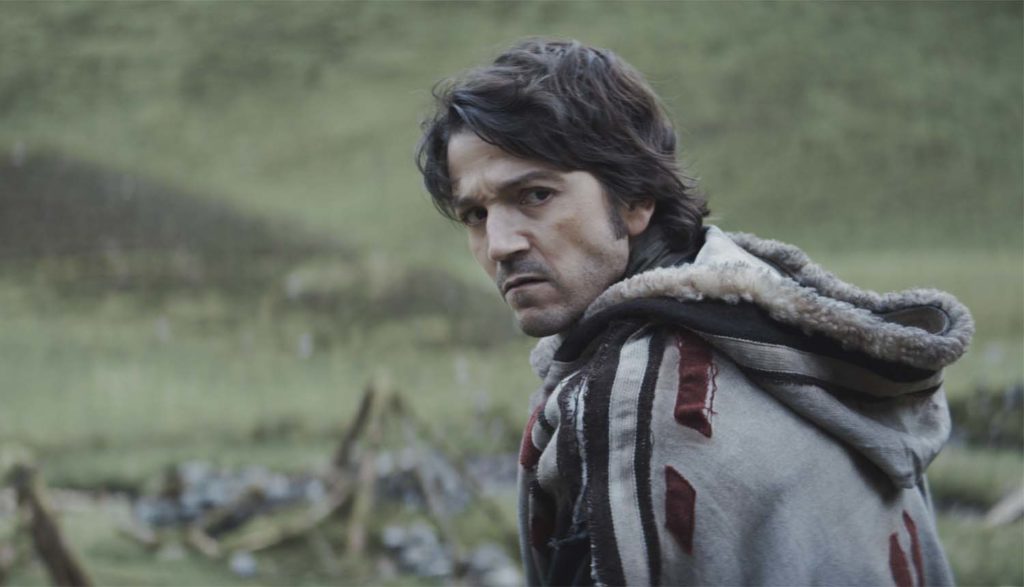LISTEN TO THE PLUGGED IN SHOW, EPISODE 149
Picture yourself on a boat, paddling down a river. Now, imagine that far off into the distance, you can see that the river suddenly shoots off a cliff—clearly turning into a massive waterfall. There’s no sign on the riverbank alerting you to the sudden drop. But then again, would you really need one? You can see the danger right in front of you.
Now, imagine that same you in that same boat on that same river. Only there’s no waterfall up ahead: Instead, the water is filled with crocodiles, hidden from view! Crocodiles that have learned how to use waterproof power drills! Now, a sign warning you of those particularly bright crocodiles might be nice, wouldn’t it?
That, in a nutshell, is why we don’t have a review of Netflix’ movie Blonde on our site, but we do have one of the streaming service’s Heartbreak High. Blonde (a buzzy biopic of Marilyn Monroe) comes with an NC-17 rating, so we opted to pass on that film: The rating itself would be warning enough for most. But Heartbreak High—a TV show that seems made for teens but contains some very adult content—isn’t so self-evident. We needed to review it to see what was in it—and just what sort of warning sign it warranted.
We talk about that and lots of other fascinating ratings-related issues during this episode of The Plugged In Show. And once we’re done with that, we’ll turn our attention to Andor, the latest Star Wars-themed show to be released on Disney+. Oh, and while the show’s pretty good, Andor warrants a warning sign or two, as well.
So pick up an oar and row, row, row with us on this installment of our little show. We promise it’ll be smooth sailing. Chime in with your own thoughts on Facebook and Instagram. And feel to fish through links below, which lead to everything we talk about.
- Plugged In Review: Game of Thrones
- Plugged In Review: Titanic
- Plugged In Review: Lord of the Rings: The Rings of Power
- Plugged In Review: Frozen
- Plugged In Review: Heartbreak High
- Plugged In Review: Vampire Academy
- Plugged In Review: Gossip Girl
- Plugged In Review: Andor
- Plugged In Review: The Mandalorian
- Plugged In Blog: “Getting Started with Parental Controls: Netflix (Updated)”
- Plugged In Blog: “Getting Started with Parental Controls: Hulu”







One Response
-Many of my friends, particularly some of my Jewish friends and others who are outspoken against abuse, have heavily criticized “Blonde” not because of its rating or its graphic depictions but more because of its approach to its subject matter, particularly the sensationalist or abusive elements and especially the assault scene you mentioned.
As for ratings, I’ve seen different parts of Christian culture go back and forth on this depending on what day it is. “Don’t go see R-rated movies,” but “make exceptions for The Passion, Unplanned, and Braveheart” (Tim Tebow, TimTebow/status/1506646754338521089 on Twitter, was bragging about the latter being his favorite since he was EIGHT).
“Hacksaw Ridge” was an interesting paradox here. It is a beautiful Christian movie (in focusing on a verifiably real person with a verifiably real story, it avoids a lot of the what-if, largely-imaginary-in-the-West “persecution paranoia” that too many Christian films depict) with a beautifully humane message. And it absolutely, beyond a shadow of a doubt, should have been rated NC-17 for its graphic violence. I would safely say that no minor should ever see this movie. It and the Christian-leaning “Silence” share a rating, and “Silence” deserves its ‘R’ for brief scenes of torture and a bloody decapitation, but the two are galaxies away in terms of potentially traumatic brutality and intensity.
It was interesting that one of you mentioned “The Hunger Games,” because while the level of violence depicted in at least the first two books was fairly standard for a story that wouldn’t be too intense for teens (I did take offense to the fate of Katniss’ father and to quite a bit of what happened in “Mockingjay”), the *context* of it—both that it involves children and that one of those would-be ‘heroes’ devolves into a cold-hearted terrorist over time and deservingly alienates someone who probably would have been his love interest—bothered and disturbed me much more deeply than did the depiction of violent actions against individual bodies. And I think that, as well as when discussing depictions of sex and sexuality, deserves every bit as much attention as asking, “is there dismemberment,” “is there profanity,” “what body parts are depicted.”
I liked “Shame.” I was deeply critical of some of its writing elements (the main character is designed and intended to be somewhat sympathetic but personally unlikable, making most of the movie painful, and most of the women he interacts with in the movie seem to have very low standards in even giving an individual such as him the time of day, let alone what is depicted afterward), and it’s an extremely difficult watch, featuring harsh and even cruel language as well as an intense scene of self-harm, but it unflinchingly showcases some of the potential consequences of sexual selfishness in a way that’s not addressed by condemning a movie for (even within the western world) a culturally subjective rating or for showing culturally subjective lists of body parts. (Nowhere in the Bible does it say that women’s chests are arbitrarily and unfairly more indecent than men’s, for instance, but so many of our media practices operate by such a principle.)
Considering how many churches have come under fire for abetting sexual abuse, sometimes even including pastors making sexually un-Godly comments from the pulpit, if we applied the same standards of scrutiny to our sermons that we do to our movies (and both should be carefully examined), then we’d have to condemn all too many of those people and their messages, verbally spoken or revealed through action or inaction, for the same reason.